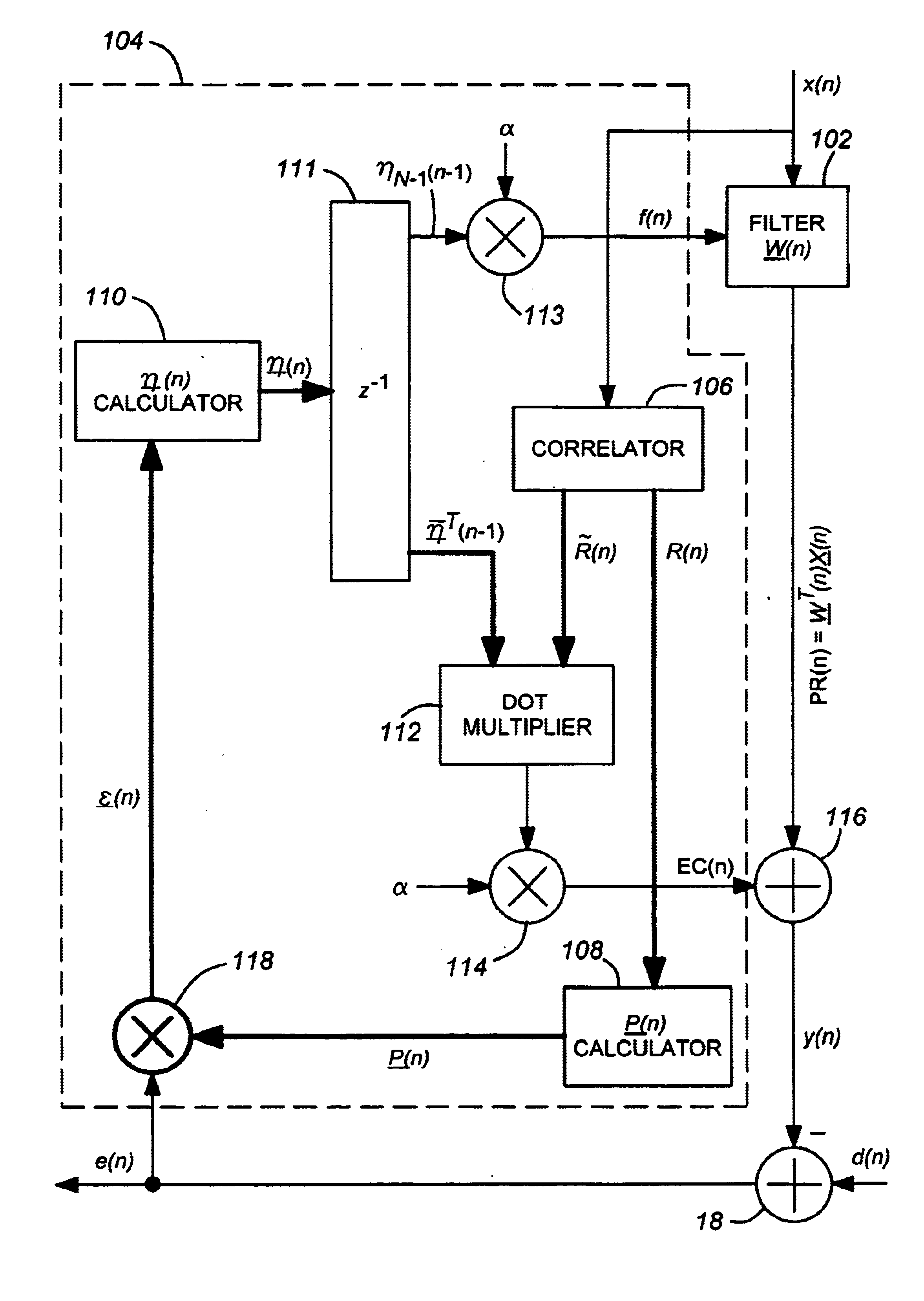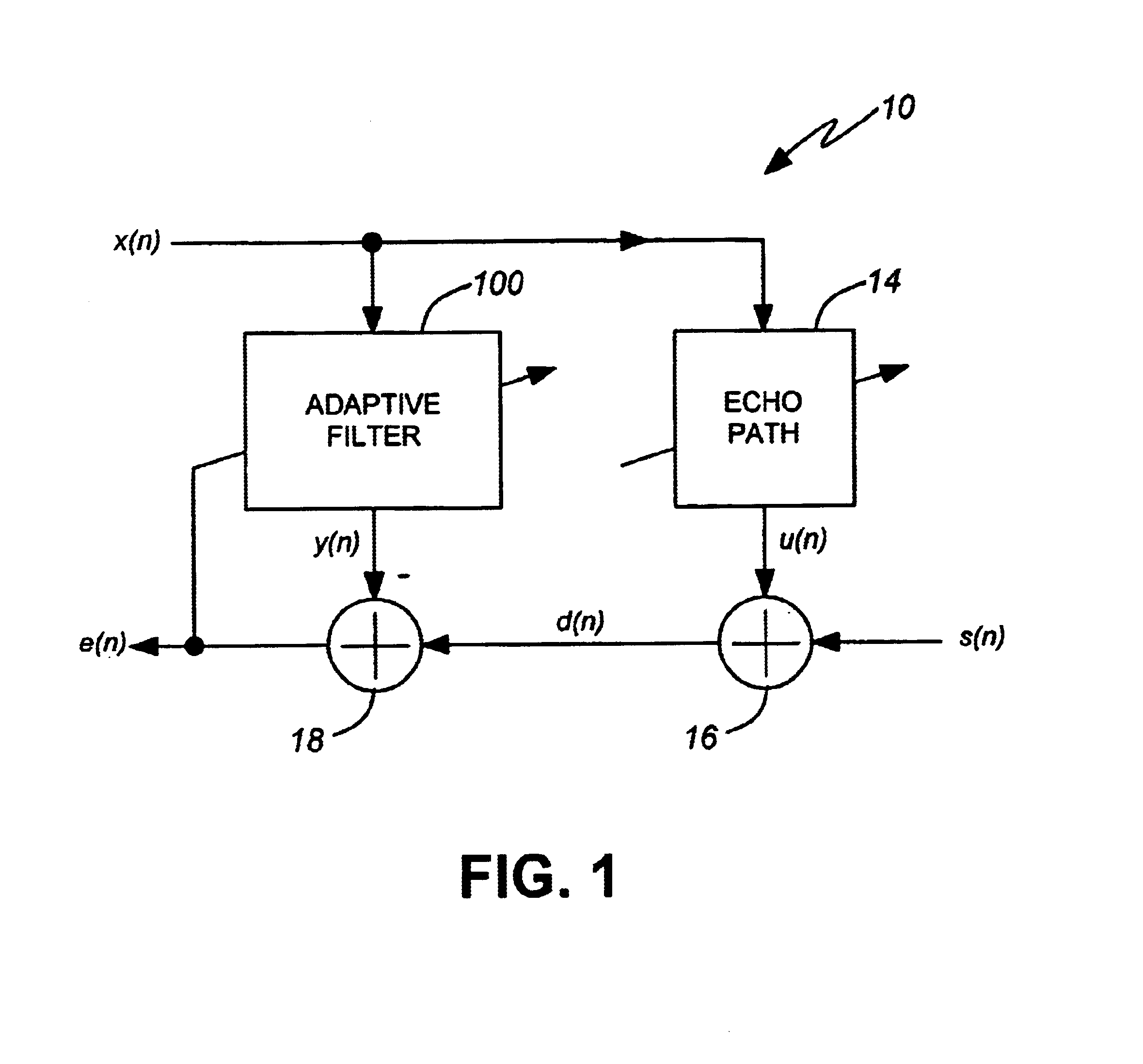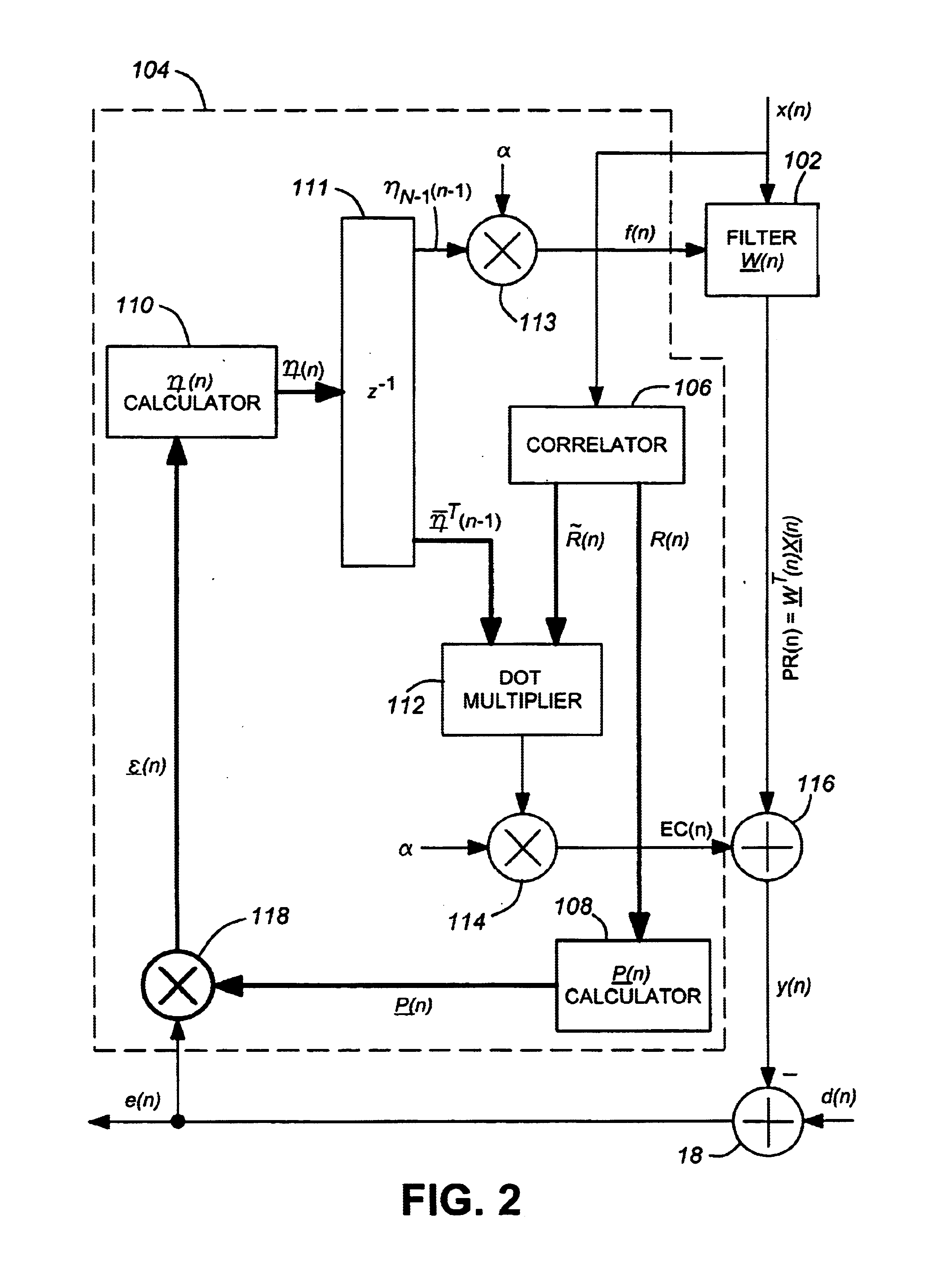Stable adaptive filter and method
a filter and adaptive filter technology, applied in the field of stable adaptive filter and method, can solve the problems of inability to implement methods on a real time platform, and inability to achieve ap methods
- Summary
- Abstract
- Description
- Claims
- Application Information
AI Technical Summary
Problems solved by technology
Method used
Image
Examples
first embodiment
A method of adaptive filtering implemented in an adaptive filter according to the invention includes an iterative "steepest descent" technique to iteratively solve the Equation 10.
In general, steepest descent is a technique that seeks the minimum point of a certain quadratic function iteratively. At each iteration (the same as sampling interval in our application), it takes three steps consecutively:
1. to find the direction in which the parameter vector should go. This is just the negative gradient of the quadratic function at the current point;
2. to find the optimum step size for the parameter vector updating so that it will land at the minimum point along the direction dictated by the above step; and
3. to update the parameter vector as determined above.
By iteratively doing the above, the steepest descent reaches the unique minimum of the quadratic function, where the gradient is zero, and continuously tracks the minimum if it moves. Details about the steepest descent method can be...
second embodiment
A method of adaptive filtering according to the present invention uses an iterative "conjugate gradient" technique to iteratively solve the Equation 10, the corresponding calculator being shown in FIG. 4.
Conjugate gradient is a technique that also seeks the minimum point of a certain quadratic function iteratively. Conjugate gradient is closely related to the steepest descent scheme discussed above. It differs from the steepest decent in that it is guaranteed to reach the minimum in no more than N steps, with N being the order of the system. That is, conjugate gradient converges faster than the steepest descent. At each iteration (the same as sampling interval in out application), the conjugate gradient takes five steps consecutively:
1. to find the gradient of the quadratic function at the current point;
2. to find the optimum factor for adjusting the direction vector, along which adjustment to the parameter vector will be made;
3. to update the direction vector as determined above;
4....
PUM
 Login to View More
Login to View More Abstract
Description
Claims
Application Information
 Login to View More
Login to View More - R&D
- Intellectual Property
- Life Sciences
- Materials
- Tech Scout
- Unparalleled Data Quality
- Higher Quality Content
- 60% Fewer Hallucinations
Browse by: Latest US Patents, China's latest patents, Technical Efficacy Thesaurus, Application Domain, Technology Topic, Popular Technical Reports.
© 2025 PatSnap. All rights reserved.Legal|Privacy policy|Modern Slavery Act Transparency Statement|Sitemap|About US| Contact US: help@patsnap.com



